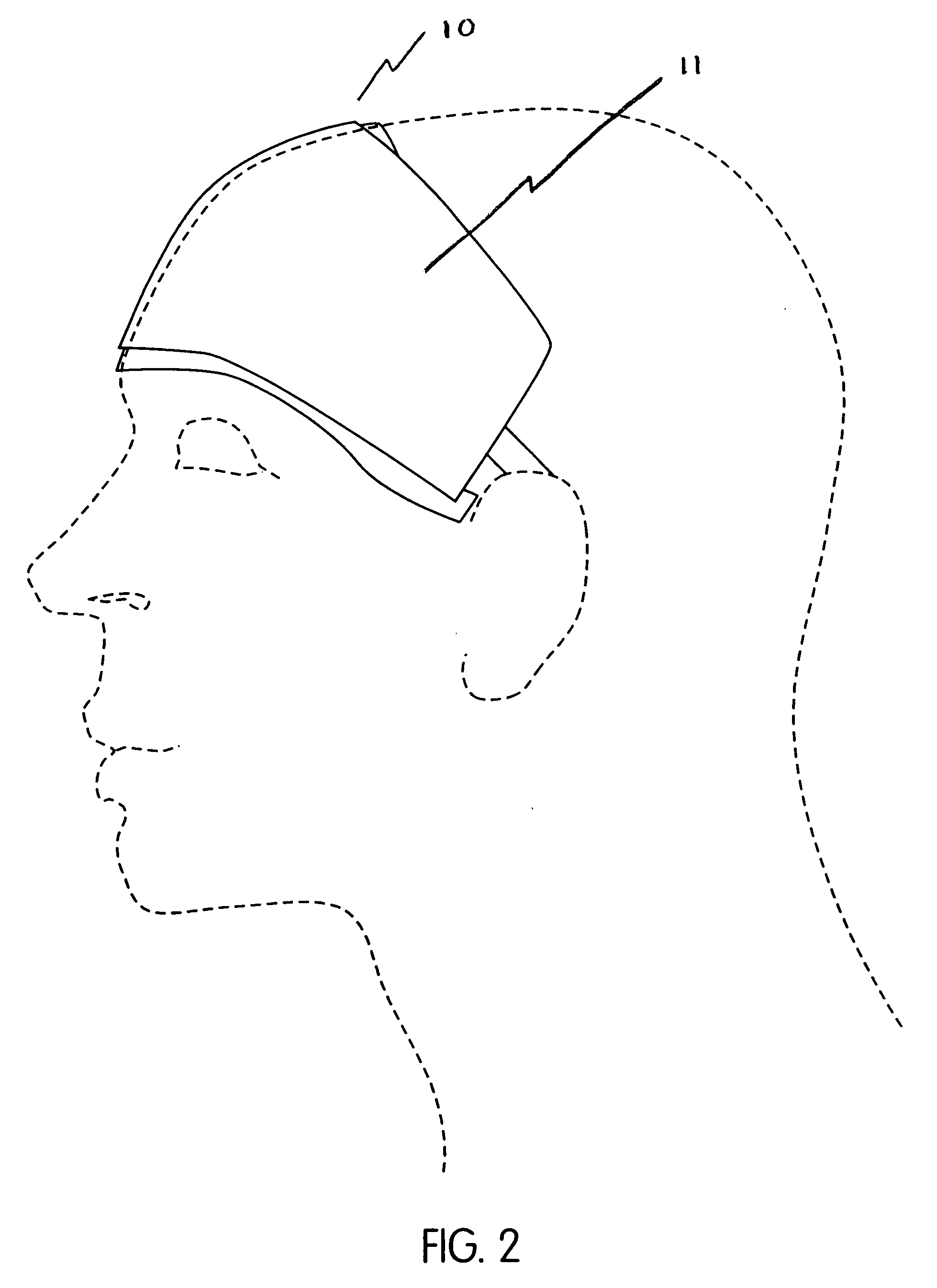Method and apparatus of noninvasive, regional brain thermal stimuli for the treatment of neurological disorders
a brain and brain thermal stimulation technology, applied in the field of brain thermal stimulation delivery methods and apparatuses, can solve the problems of prescriptions that can have unwanted and harmful side effects, medications that are quite expensive and potentially addictive, and medications that even become less effectiv
- Summary
- Abstract
- Description
- Claims
- Application Information
AI Technical Summary
Benefits of technology
Problems solved by technology
Method used
Image
Examples
Embodiment Construction
[0036]The invention will now be described in detail in relation to preferred embodiments and implementation thereof which is exemplary in nature and descriptively specific as disclosed. It must be understood that no limitation of the scope of the invention is thereby intended. The invention encompasses such alterations and further modifications in the illustrated method and apparatus, and such further applications of the principles of the invention illustrated herein, as would normally occur to persons skilled in the art to which the invention relates.
[0037]The present invention is based upon the principle that cooling or warming the scalp over certain regions of brain both triggers and maintains the physiological processes impacted by neurological disorders. For example, but not by way of limitation, cooling the prefrontal cortex of the brain can help treat the physiological processes that lead to sleep onset and sleep maintenance and thereby assist in the treatment of sleep disord...
PUM
 Login to View More
Login to View More Abstract
Description
Claims
Application Information
 Login to View More
Login to View More - R&D
- Intellectual Property
- Life Sciences
- Materials
- Tech Scout
- Unparalleled Data Quality
- Higher Quality Content
- 60% Fewer Hallucinations
Browse by: Latest US Patents, China's latest patents, Technical Efficacy Thesaurus, Application Domain, Technology Topic, Popular Technical Reports.
© 2025 PatSnap. All rights reserved.Legal|Privacy policy|Modern Slavery Act Transparency Statement|Sitemap|About US| Contact US: help@patsnap.com



